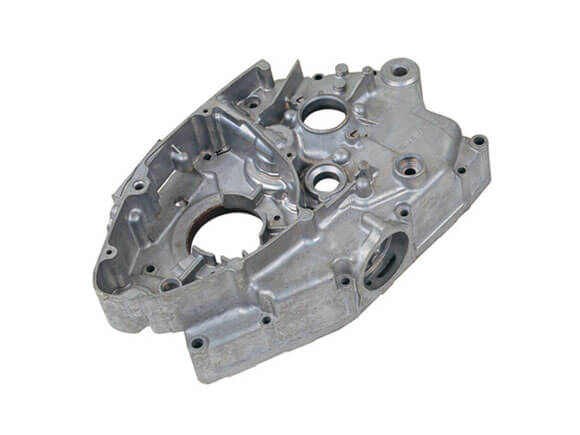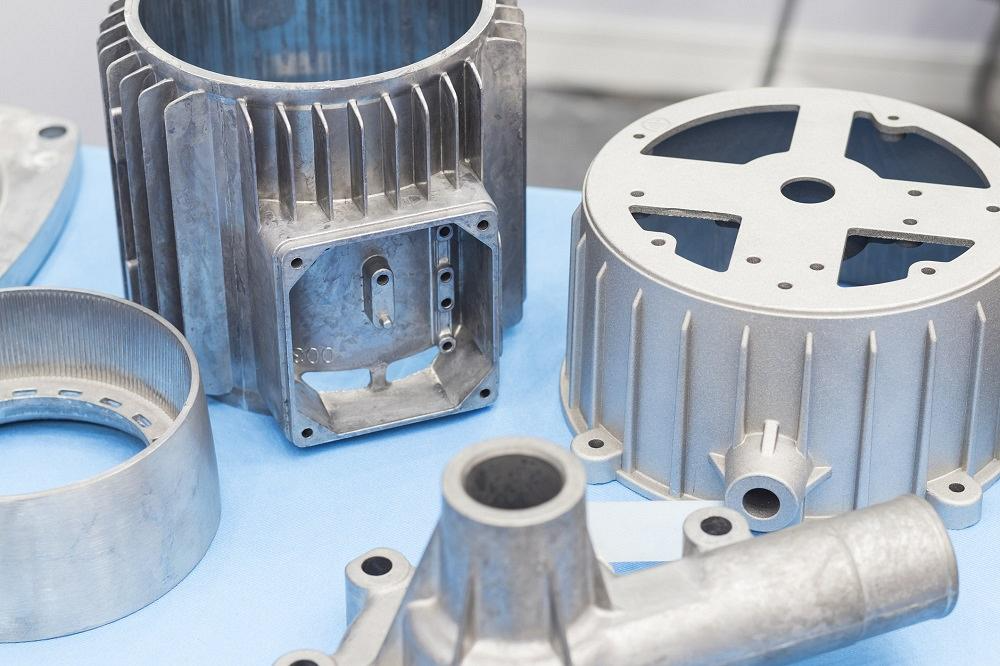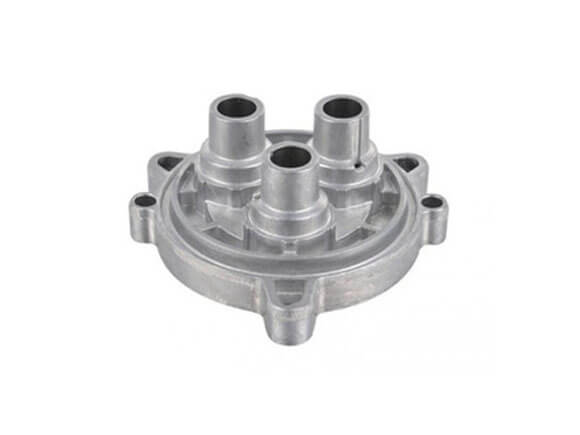Comprehending the Ecological Benefits of Light Weight Aluminum Shop Techniques
Light weight aluminum factory methods play an essential role in advancing sustainability within the manufacturing market. By implementing advanced reusing approaches and energy-efficient methods, these methods greatly minimize waste and carbon impacts. Cutting-edge spreading approaches further improve resource preservation initiatives. As industries increasingly focus on environmental duty, understanding the complete influence of these practices comes to be important. What certain advancements are blazing a trail in this change?
The Function of Light Weight Aluminum in Sustainable Production
Numerous materials add to lasting production, aluminum stands out due to its one-of-a-kind buildings and recyclability. This light-weight steel is not only resilient yet also possesses outstanding corrosion resistance, making it a perfect choice for numerous applications, from vehicle to building and construction. Its high strength-to-weight proportion causes power financial savings during transportation and use. Aluminum can be recycled forever without losing its integral qualities, promoting a round economy.
The production process of light weight aluminum has actually advanced, incorporating energy-efficient techniques that minimize carbon impacts. By utilizing sustainable power resources, producers are significantly minimizing the ecological impact related to aluminum production. Additionally, using recycled light weight aluminum calls for considerably less power compared to removing and improving primary aluminum, causing reduced greenhouse gas emissions. As sectors look for sustainable solutions, light weight aluminum's flexibility and environmentally friendly features placement it as a critical product in the pursuit of greener manufacturing practices.
Advanced Recycling Techniques in Aluminum Foundries
Advanced recycling methods in light weight aluminum shops are reinventing the method scrap aluminum is processed and recycled. Innovative methods, such as closed-loop recycling systems, allow foundries to recover aluminum from manufacturing waste and out-of-date items successfully. These systems lessen material loss and improve the top quality of recycled aluminum, making it a feasible choice to main aluminum manufacturing.
Additionally, advanced arranging innovations, consisting of automated optical sorting and X-ray fluorescence, enhance the separation of aluminum from various other materials, ensuring higher purity levels in recycled outputs. This accuracy minimizes contamination, which can jeopardize the integrity of the final product.
The integration of advanced melting innovations, such as induction melting and energy-efficient heating systems, enhances the recycling process, decreasing power consumption. Jointly, these developments add to a more lasting aluminum sector by minimizing reliance on virgin products and lowering greenhouse gas discharges related to light weight aluminum manufacturing.
Energy Effectiveness Improvements in Foundry Operations
Energy performance enhancements in aluminum factory procedures can substantially boost sustainability practices. Executing waste warm healing systems permits foundries to repurpose excess power, decreasing total power intake. In addition, innovations in procedure automation streamline procedures, resulting in minimized waste and enhanced resource usage.
Waste Warmth Recovery
Implementing waste heat recuperation systems in aluminum foundries substantially improves energy efficiency by recording and reusing excess thermal energy generated throughout production procedures. These systems help with the conversion of squandered warm right into usable energy, which can be utilized for different applications within the foundry, such as pre-heating products or powering devices. By recouping warmth that would certainly otherwise be removed right into the setting, shops can noticeably reduce their overall energy consumption and greenhouse gas exhausts. This approach not just reduces functional expenses but also advertises lasting methods within the market. In addition, the adoption of waste warmth recuperation innovations aligns with regulatory standards focused on decreasing environmental influence, making it a vital component of modern aluminum factory operations.
Process Automation Advantages
Automating processes in aluminum foundries can significantly improve power effectiveness by optimizing production workflows and reducing waste. By carrying out advanced technologies such as robotics and maker understanding, factories can improve procedures, decreasing unnecessary power consumption. Automated systems assist in exact control over temperature and material handling, making sure that energy is utilized just when needed. Additionally, real-time surveillance allows for instant changes, reducing the risk of power loss. The integration of automation not just enhances efficiency however additionally reduces operational costs, making factories extra competitive. Because of this, these energy-efficient techniques contribute substantially to sustainability goals, lowering the ecological footprint of light weight aluminum manufacturing while satisfying boosting market demands - Precision aluminum casting. Boosted power effectiveness through automation stands for a vital step towards greener foundry procedures
Minimizing Waste With Ingenious Casting Techniques
Ingenious spreading approaches play a crucial duty in reducing waste in light weight aluminum factories. Techniques such as sophisticated molding and the use of recyclable products significantly minimize production scrap. These methods not only boost efficiency however additionally add to a more lasting manufacturing process.
Advanced Molding Techniques
As sectors progressively prioritize sustainability, advanced molding methods in light weight aluminum foundries become effective options for lowering waste. These ingenious techniques, such as 3D printing and accuracy mold production, considerably boost the effectiveness of the casting procedure. By using computer-aided design (CAD) and simulation modern technologies, suppliers can enhance mold geometry, reducing material use while preserving product integrity. Additionally, advanced methods allow the production of complex forms that typical methods can not attain, decreasing the need for extra machining and thereby lowering scrap product. The adaptability of these strategies permits for quick prototyping, further reducing lead times and energy intake. Generally, the application of see post advanced molding strategies stands for a crucial action towards eco accountable light weight aluminum manufacturing, aligning with worldwide sustainability objectives.
Recyclable Product Usage
Recyclable materials play a pivotal role in minimizing waste within aluminum factories, transforming the casting landscape through their efficient utilization. By including scrap aluminum and other recyclable components right into the production procedure, factories can substantially decrease the need for virgin products. This not just conserves natural resources yet also minimizes power intake connected with mining and refining. Ingenious casting techniques, such as die spreading and sand spreading, enable for seamless integration of these materials, ensuring high-grade outputs. The use of recyclable products promotes a circular economic climate, where resources are continually recycled and repurposed, reducing landfill payments. Inevitably, the calculated use recyclables boosts sustainability while promoting cost-effectiveness in aluminum browse around these guys shop procedures.
Lessening Manufacturing Scrap

Life Cycle Analysis of Light Weight Aluminum Products
Aluminum is extensively acknowledged for its resilient and lightweight properties, a thorough Life Cycle Evaluation (LCA) discloses the environmental impacts connected with its manufacturing, use, and disposal. The LCA procedure checks out the energy consumption, greenhouse gas exhausts, and source exhaustion connected to aluminum items from extraction of bauxite ore to end-of-life management. Primary light weight aluminum production is energy-intensive, often depending on fossil fuels, which adds significantly to carbon impacts. In comparison, recycling aluminum offers substantial ecological advantages, as it makes use of only a portion of the energy needed for main manufacturing. Additionally, the reusing process decreases landfill waste and conserves all-natural sources. The LCA also considers the item's longevity and capacity for reuse, stressing the relevance of sustainable style. Generally, recognizing the life cycle effects of light weight aluminum products is important for making notified decisions that prioritize ecological sustainability within the industry.
Instance Studies: Effective Sustainable Practices in the Sector
The aluminum industry has started to embrace ingenious sustainable techniques that address the environmental obstacles recognized in Life Cycle Evaluations. One remarkable case is a leading shop that applied a closed-loop recycling system, considerably minimizing waste and energy usage. By reusing scrap aluminum in production, the center attained a 40% reduction in its carbon impact.
One more instance involves a supplier that adopted sustainable energy resources, powering its procedures with solar and wind power - Aluminum Foundry. This change not just lowered greenhouse gas discharges however also boosted the company's online reputation her latest blog amongst environmentally mindful consumers
Furthermore, a third foundry has actually invested in advanced casting methods, which maximize product usage and minimize flaws, further decreasing resource intake. These study illustrate that the aluminum market can integrating sustainable practices, demonstrating both environmental obligation and economic viability, inevitably contributing to a much more lasting future.
Frequently Asked Questions
How Does Aluminum Compare to Other Metals in Sustainability?
Aluminum is usually thought about more sustainable than many steels as a result of its recyclability, reduced power requirements for production, and reduced environmental impact. Its lifecycle efficiency surpasses that of steel and copper in various applications.
What Is the Carbon Impact of Aluminum Shop Processes?
The carbon footprint of aluminum factory procedures varies, usually varying from 4 to 15 statistics lots of CO2 per lots of light weight aluminum created. Factors affecting this include power sources, innovation, and the performance of operations.
Exist Wellness Risks Connected With Light Weight Aluminum Factory Procedures?

What Are the Expenses Connected With Sustainable Aluminum Techniques?
The costs related to lasting light weight aluminum techniques include greater first investments in modern technology, potential boosts in operational expenditures, and ongoing maintenance. These are frequently countered by lasting cost savings and lowered environmental effect.

Just How Does Light Weight Aluminum Recycling Effect Local Communities?
Light weight aluminum reusing favorably impacts local communities by producing jobs, lowering land fill waste, and decreasing energy costs. It promotes financial development and promotes ecological stewardship, bring about much healthier living conditions and boosted area interaction in sustainability efforts.
Additionally, the usage of recycled aluminum needs significantly less power contrasted to drawing out and refining key aluminum, leading to reduced greenhouse gas discharges. Advanced recycling methods in aluminum foundries are revolutionizing the way scrap light weight aluminum is processed and recycled. Aluminum Casting Company. Applying waste warm healing systems in light weight aluminum foundries considerably improves energy efficiency by catching and reusing excess thermal energy generated throughout manufacturing procedures. Automating processes in aluminum foundries can greatly boost power performance by maximizing manufacturing workflows and lowering waste. The carbon footprint of aluminum foundry processes differs, generally ranging from 4 to 15 metric loads of Carbon dioxide per heap of light weight aluminum created